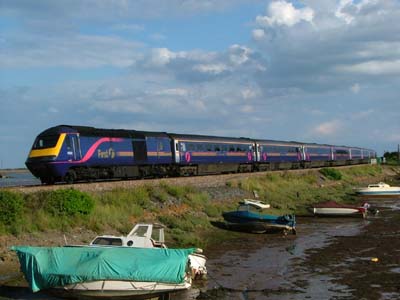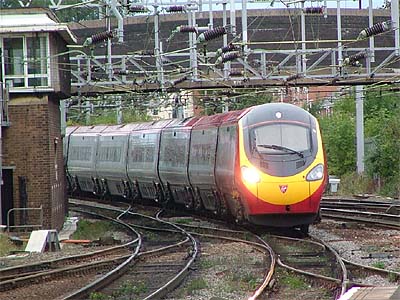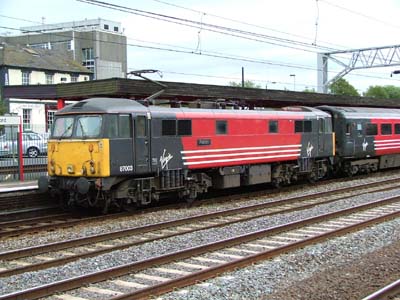Stephen Karlson of Cold Spring Shops has been riding European rails.
The express train picks its way out of the city station on rapid-transit tracks. Once out of downtown, it leaves the rapid-transit line, the motorman shuts off at the end of third rail, and power collectors reach for the overhead wire. But this express train is not an Electroliner at Crawford Avenue winding it up for Milwaukee, rather, it is a Eurostar leaving the Southern Electric for the Channel Tunnel Rail Link
There’s something incongrous about the Eurostar snaking across the rooftops of Brixton, on those sharply-curved Victorian brick viaducts. But this was never strictly a ‘rapid transit’ line; back in the days of steam Bullied pacifics would trace the same route on their way to the Kent coast.
Then he’s off to Germany.
Once across the Hohenzollern Bridge and onto the new German high-speed line, however, it’s off to the races, with speeds hovering near 300 km/h, definitely world-class. What’s that old song about “passing cars like they were standing still?” The high-speed line follows an Autobahn route and there are many opportunities to leave the motorists behind.
Running the line parallel to the Autobahn was a clever idea; leave those BWMs and Mercedes standing!. I think it beats the 110mph section of the West Coast Mainline paralleling the M1 at Watford Gap!
I’ve never been on any of the German high-speed lines; my sightings of ICE trains have been on the decidedly not high-speed single track Interlaken branch in Switzerland with the daily Hamburg to Interlaken “Thunersee”
Stephen is not so impressed with the internal seating layout.
I have come to the conclusion, however, that fixed seating with half the seats facing aft, although expedient, is a paradigm of rapid transit barbarism that doesn’t belong on an intercity train. In defense of the Europeans, many trains reverse directions at stub-end stations: imagine passing through the old St. Louis or Boston stations as routine.
Older European trains have seats in facing pairs; it’s only the newer stock that had so-called ‘airline style’ seating, which allows them to cram more seats in a given space. To this European, the idea that all seats should face forwards seems hopelessly impractical; you’d have to turn the entire train on a triangle at each end of the run! This might not be much of an overhead for a train taking two days and two nights to run from Chicago to Los Angeles, but the majority of European trains have total end to end runs of just three or four hours. For this type of run, the same set of coaches is expected to make several return trips a day. Already most shorter runs are multiple units or push/pull formations to save attaching and removing locomotives at each end; just imagine the overhead of turning the trains round! The extended turnround time could easily increase the number of coaches required by 50% or more!



